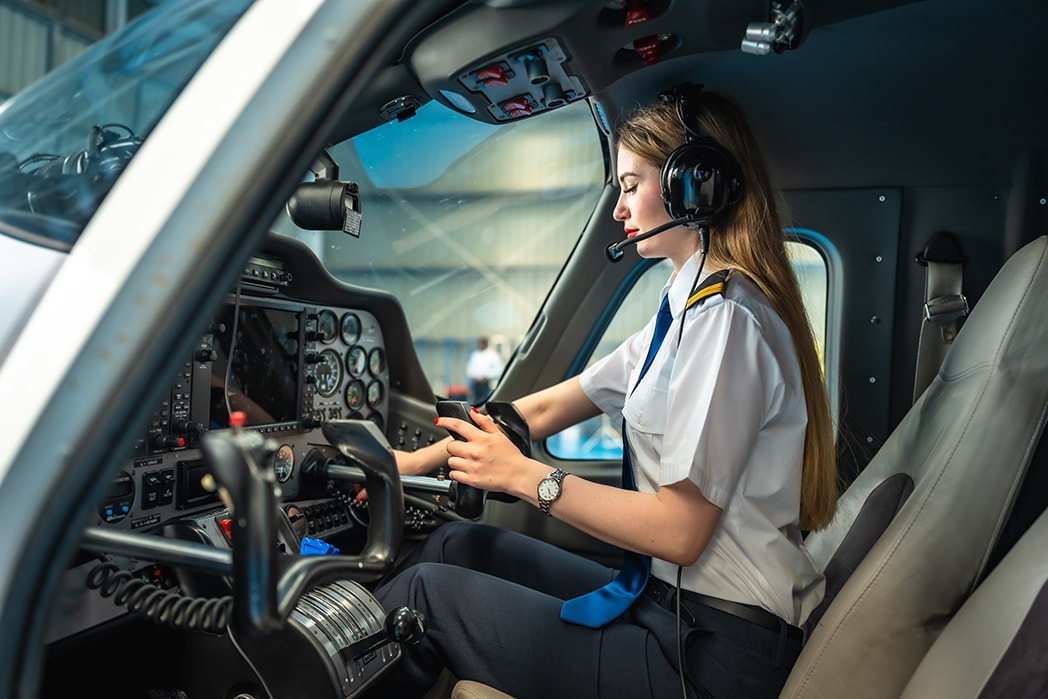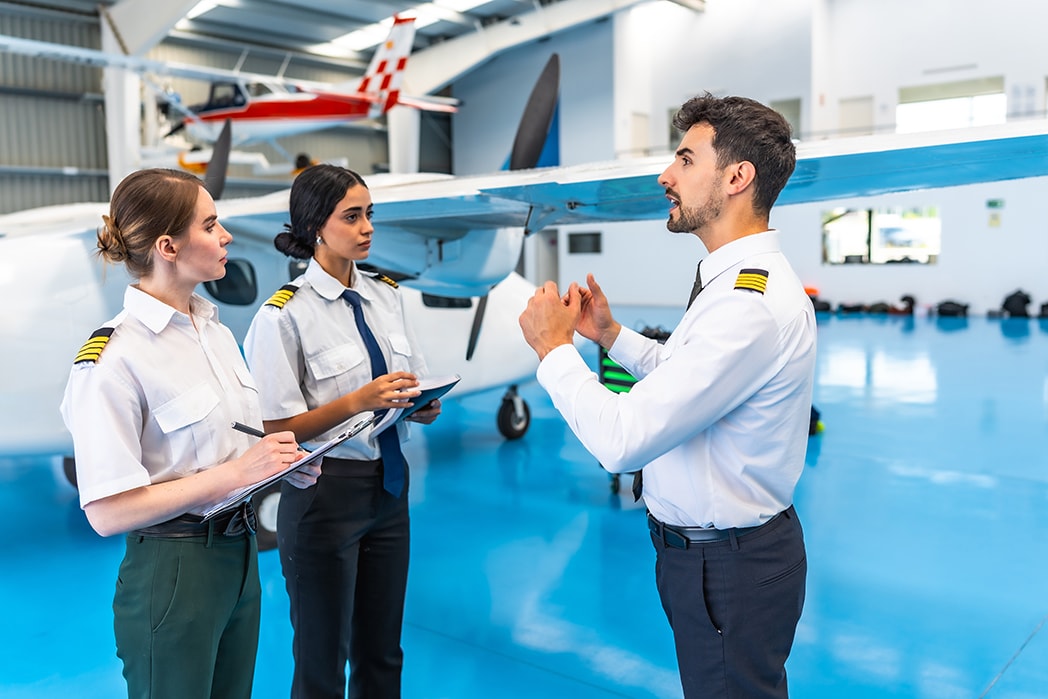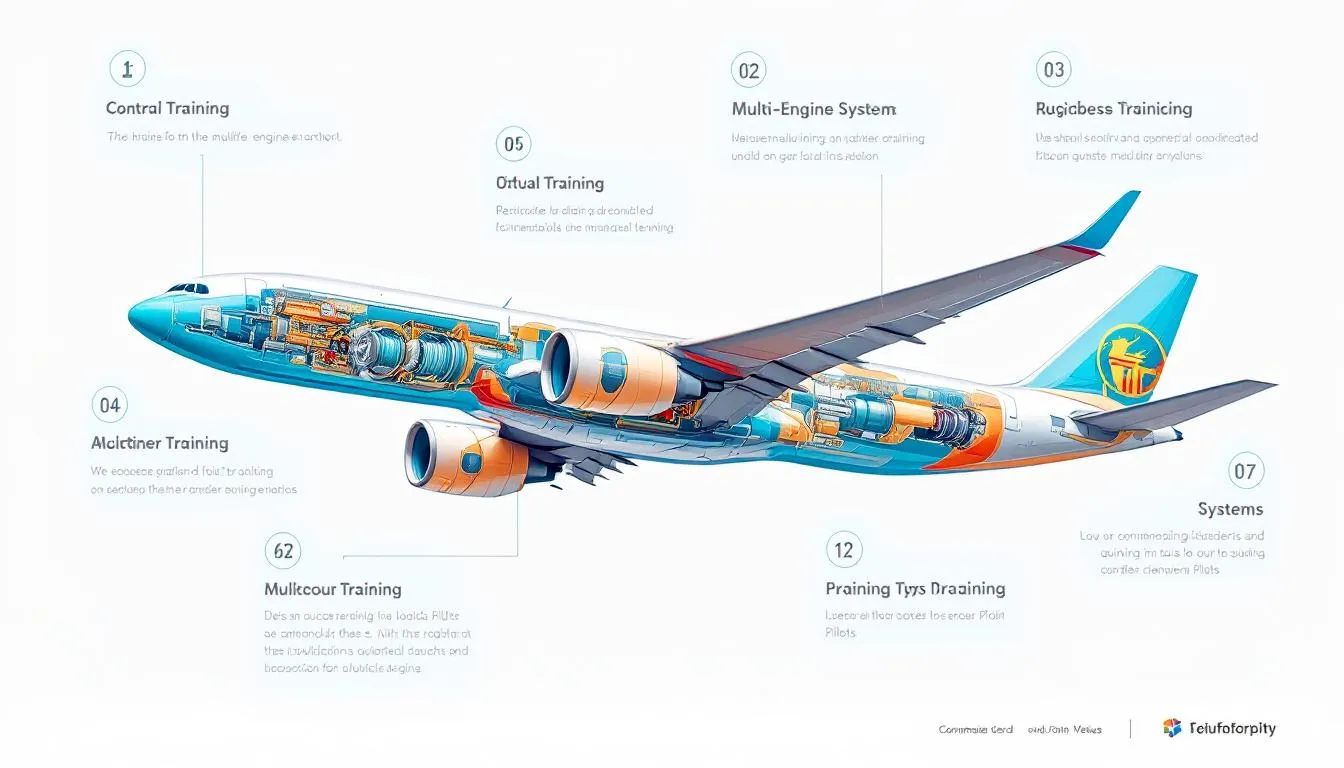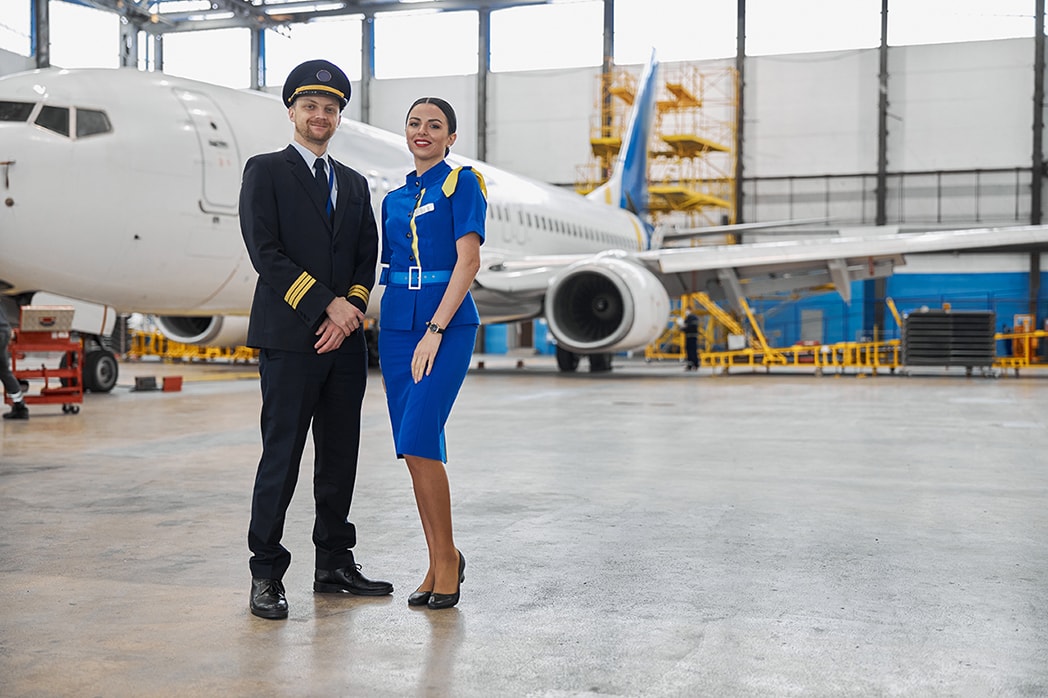Best Practices for Meeting Commercial Pilot Standards
Jun 25, 2025
To become a commercial pilot, you must meet the commercial pilot standards set by the Federal Aviation Administration (FAA).
That means at least 250 hours, an in-depth knowledge exam and practical flight maneuvers. These standards ensure pilots have the skills and knowledge to fly safely in commercial aviation.
While the commercial route is more advanced, aspiring aviators often begin by understanding more basic paths such as the sport pilot medical requirements, which set a different threshold for entry into aviation.
Key Takeaways
-
Commercial pilots must meet FAA standards, 250 hours and knowledge of aeronautical regulations to get a commercial pilot certificate.
-
Comprehensive training is key, FAA knowledge exam, flight training and practical test standards so pilots are prepared for all flight conditions and scenarios.
-
Recurrent training and understanding career paths, like becoming a Certified Flight Instructor, helps with ongoing professional development and job prospects in aviation.
Understanding Commercial Pilot Standards

To become a commercial pilot you need to get a commercial pilot certificate.
This certificate opens up paid flying jobs from flight instructor to corporate pilot and is the foundation of a successful aviation career.
The Federal Aviation Administration (FAA) sets the standards and pilots requirements for this certificate, so all commercial pilots meet strict safety and proficiency standards.
To become a commercial pilot, you need to accumulate 250 hours of flight time, with specific hour breakdowns for different types of flight time like cross country time and night flying.
Requirements vary for different aircraft categories, such as the single engine airplane and lighter than air category, each with their own specific training standards.
Enrolling in an FAA approved flight school allows you to complete your training in as little as thirty hours for certain categories if all other requirements are met.
This flexibility gets you to your goal faster.
Modern pilot training has changed a lot, it’s not just about traditional flying skills but also managing complex electronic systems.
The FAA now allows training for the commercial pilot certificate in modern, technically advanced aircraft, reflecting the complexity of today’s aviation environment and preparing pilots for advanced avionics and other technologies often using a technically advanced airplane as part of the training fleet.
Being a commercial pilot standard means more than just logging flight hours. It means a broad understanding of aeronautical knowledge, flight proficiency standards and sound decision making in different flying scenarios.
Following these standards ensures commercial pilots are the safest and most professional in their careers through an approved commercial pilot course.
FAA Knowledge Exam
The FAA knowledge exam is a big part of becoming a commercial pilot.
This exam tests a pilot’s knowledge of regulations, procedures and safety.
To prepare for the FAA knowledge exam you will study a wide range of materials, often assigned by your flight instructor or through home study courses.
You need to be familiar with topics such as aeronautical knowledge, aircraft systems including the engine control system consisting of various components that manage and regulate engine performance and preflight procedures.
Preparation often involves creating and reviewing preflight checklists and understanding aircraft operation.
The FAA knowledge exam may also include questions about permitted credit for flight training hours obtained in simulators or training devices, including the maximum allowable hours and the conditions under which such credit is granted.
On exam day you will need to bring valid identification with a photo and signature to verify your identity.
The exam itself is designed to challenge and test your knowledge of the theoretical aspects of flying. It covers:
-
Airspace
-
Weather
-
Navigation
-
Emergency procedures
Thorough preparation for the FAA knowledge exam ensures you have the foundation of knowledge to succeed in your training and future career.
Passing the FAA knowledge exam is a big milestone to getting your commercial pilot certificate. It shows you are committed to learning and ready to tackle the practical aspects of flight training.
Before being eligible for the practical test, the applicant must have satisfactorily completed all required training and knowledge components.
Focusing on preparation for this exam sets you up for success in your aviation journey.
Flight Training Requirements
Flight training is the foundation of becoming a commercial pilot.
To get a commercial pilot certificate you must have a minimum of 250 hours of flight time which includes specific requirements for different types of flight experience.
This comprehensive training ensures you are prepared for all types of flying and scenarios.
Being in an FAA approved flight school gives you:
-
190 hours of flight time if all other requirements are met.
-
Streamlined training while still meeting FAA standards.
-
Training in multiple aircraft categories, including airplane single engine rating and technically advanced aircraft.
-
Well rounded flying experience.
Flight training covers a wide range of skills and knowledge areas from basic flight maneuvers to advanced navigation, as well as essential training flights for practical experience.
You must complete specific training components such as one cross country flight that meets certain distance and landing requirements, solo flights, and instrument training to become proficient.
This training includes the use of flight simulators and training devices to learn and to be prepared for real world flying situations, solo flight and flight with solo flight.
Many of these training environments now include an electronic primary flight display to help students develop familiarity with modern cockpit systems.
For instrument training, you are required to complete ten hours, including at least five hours in a view-limiting device.
Some categories may require thirty hours of training to meet FAA regulations.
Certain flights must be a flight involving landings at multiple airports and cover a total straight line distance exceeding a specified number of nautical miles from the original departure point.
The goal of flight training is to prepare you for the practical test standards to get a commercial pilot certificate.
Completing the required flight hours and mastering the skills shows you are ready to fly safely and effectively in the commercial aviation environment.
Practical Test Standards
The practical test standards (PTS) are part of the certification process for commercial pilots.
These standards outline what you need to demonstrate during your check ride to get your pilot certificate.
The check ride is a comprehensive test of both technical flying skills and decision making in various scenarios.
During the check ride you will be required to show proficiency in:
-
Takeoffs
-
Landings involving
-
Approaches
-
Navigation
-
Aircraft systems
-
Emergency procedures
-
Recovery from unusual flight attitudes
-
Partial panel skills
The standards have specific criteria that must be met so you will be thoroughly evaluated against the airman certification standards.
The practical test is a tough test of your overall proficiency and readiness to fly commercially.
It tests not only your technical skills but also your ability to make good decisions under pressure.
Meeting the practical test standards proves you have the knowledge and skills to fly safely and effectively in the commercial aviation environment.
To prepare for the practical test you need to train and practice thoroughly.
You need to be familiar with all aspects of aircraft operation and navigation as well as the specific maneuvers in the standards.
Focus on these areas and meet the required criteria and you’ll pass your check ride and get your commercial pilot certificate.
Instrument Training

Instrument training is a big part of commercial pilot training, it teaches pilots how to fly in low visibility conditions.
This is essential for safe flying in challenging environments, so pilots can rely on instruments rather than visual references.
Proficiency in instrument training means pilots can navigate and manage their aircraft in any weather.
Practicing partial panel training is a big part of instrument training, it’s flying without using certain instruments.
This training prepares pilots for scenarios where instruments may fail or provide incorrect data, it enhances overall safety and decision making.
Master these skills and pilots can control their aircraft and make informed decisions in any situation.
Modern instrument training often takes place in aircraft equipped with an electronically advanced avionics system, which includes an electronic primary flight display with the following installed
components: airspeed indicator, heading indicator, vertical speed indicator, and a two-axis autopilot integrated with a heading guidance system.
These systems also incorporate navigational systems, tracking navigational systems, and a global positioning system, all managed by a digital computer to enhance situational awareness and flight safety.
Instrument training is done using a flight simulator and a flight training device, pilots can practice and hone their skills in a controlled environment.
These tools give valuable experience and builds confidence to handle real world flying challenges.
Focus on instrument training and aspiring commercial pilots will be well prepared for modern aviation.
Instrument training is a big part of a pilot’s education, it gives the skills and knowledge to fly safely in any condition. Master these skills and pilots will meet the high standards for commercial aviation.
Multi-Engine Rating

A multi-engine rating is a required rating for commercial pilots to fly multi-engine aircraft.
This airplane multiengine rating is required for many commercial airline jobs and opens up more career opportunities for a pilot to fly more complex aircraft.
Training for this rating involves learning the unique challenges and systems of multi-engine aircraft.
A big part of multi-engine training is learning how to handle engine failures and multi-engine aerodynamics.
Pilots must be proficient in these situations to ensure their aircraft and passengers are safe.
Training includes 10 hours of flight time in a multiengine seaplane for endorsements.
No written test is required to add a multi-engine rating if you already have a private certificate. This allows you to focus on the practical training and develop the skills and experience to fly multi-engine aircraft safely.
Getting a multi-engine rating adds to your qualifications and opens up more opportunities in your aviation career.
Getting a multi-engine rating not only opens up more career options but also gives you experience in flying more complex aircraft systems.
Completing the training and mastering the skills shows you’re ready for multi-engine flying.
Risk Management
Risk management is key in aviation, it’s the systematic identification, evaluation and management of hazards to maintain safety standards.
Effective risk management means identifying and mitigating risks before they impact flight operations. This is critical for commercial aviation.
Common risks in flight training environments are human factors, pilot error and maintenance issues.
Implementing a Safety Management System (SMS) means having safety policies and continuous monitoring to mitigate these risks.
Advanced avionics systems, including electronically advanced avionics systems, help with risk management by providing real time data and pilot decision making.
Technological advancements like flight simulators and safety management software help with risk mitigation by providing controlled learning environments and data analysis.
These tools allow pilots to practice and hone their skills in a safe environment, reducing the chance of error and overall safety.
Focusing on risk management means pilots meet the highest standards of safety and professionalism in their careers.
Instrument flying proficiency is another key part of risk management.
Ongoing practice and training is essential to maintain proficiency and prepare pilots for tough flying conditions.
Prioritizing risk management means commercial pilots fly safely and effectively in all environments.
Complex Airplane Proficiency
Complex airplanes require specific proficiency and training. Pilots must get a one time endorsement in their logbook from an authorized instructor certifying they are proficient in complex airplane operations.
This endorsement means pilots have the skills to fly complex airplanes safely and effectively.
Complex airplanes have a controllable pitch propeller and retractable landing gear so specific proficiency training is required.
An authorized instructor will assess the pilot’s skills and knowledge before issuing the endorsement to ensure they meet the standards.
This is to ensure pilots are fully prepared for the challenges of complex airplane operations, authority digital engine control, powered aircraft and the airplane category.
The endorsement process involves training and testing on the specific installed components and systems of complex airplanes.
Getting this endorsement means a pilot is ready to fly more advanced aircraft and take on more responsibility in their aviation career. This proficiency is critical for the highest levels of safety and professionalism in commercial aviation.
Focusing on complex airplane proficiency adds to a commercial pilot’s qualifications and opens up more career opportunities.
This training ensures they are ready for the complexities of modern aviation and meet the high standards for commercial pilot certification.
Financial Considerations
Becoming a commercial pilot is a big investment, $50,000 to over $100,000. These costs cover flight training, aircraft rental, instructor fees and all the other associated costs. But there are ways to make this investment more manageable.
Many aspiring commercial pilots use loans, scholarships and grants for flight training. Research and compare different financing options to find what works best for you.
Some flight schools offer package deals that bundle training, equipment and resources, which can lower the overall cost.
Don’t forget to factor in housing, transportation and daily living costs during your training period. Many airlines recognize the financial commitment and offer tuition reimbursement programs or signing bonuses to help new pilots offset their training costs.
Another way to reduce costs is by using flight simulators and flight training devices which the FAA allows for credit towards certain training requirements.
These tools save money and give you valuable experience in a controlled environment.
By planning and exploring all the financial resources available to you, you can make your path to becoming a commercial pilot more affordable.
Maintaining Currency
Currency is key for commercial pilots to stay safe and compliant. Here’s the low down:
-
A knowledge test is valid for 24 months.
-
If the practical test isn’t done within that time a new knowledge test is required.
-
This keeps pilots up to date with the latest regulations and procedures.
The results of the knowledge test provide valuable feedback on areas to improve whether you pass or fail. This feedback helps you identify and fill the gaps in your knowledge so you can stay at the highest level of proficiency and safety.
Recurrent training is key to keeping your skills sharp and meeting the ongoing requirements of a commercial pilot.
Being current means you can fly safely and effectively in all environments. This ongoing learning and improvement is essential for commercial aviation and passenger and crew safety.
Career Pathways

The path to becoming a commercial pilot has many career pathways, each with its own opportunities and challenges.
Pilots can be airline pilot, airline captain, corporate charter pilot, flight instructor and more. Niche roles like firefighting, law enforcement aviation and aerial surveying offer something different.
Commercial pilots can also get specialized ratings like helicopter rating, gyroplane rating, powered lift rating, glider rating, balloon rating and airship rating, each with its own training and certification requirements.
If you’re interested in lighter-than-air operations, getting a gas balloon rating requires specific training including flights from a designated launch site.
The demand for pilots is expected to increase greatly due to the growing global commercial airplane fleet and the rise of air travel.
This is good news for aspiring pilots as there will be plenty of jobs in the coming years.
Becoming a certified flight instructor (CFI) is one of the best ways to get flight experience while getting paid. As a CFI you can accumulate hours, hone your skills and share your passion for flying with new students.
Plus many training centers and approved courses offer bespoke programs to help pilots get to where they want to go faster. These programs:
-
Require fewer hours than traditional routes so you can complete your training quicker and still meet all the standards.
-
Provide structured training environments.
-
Cover comprehensive curriculums for various aviation careers. By joining an approved course training center certificated program you can get these benefits.
In the end the path to becoming a commercial pilot is full of choices and opportunities.
By knowing the options and the steps to get to them, you can navigate your journey with confidence and clarity and get to your aviation dream.
Frequently Asked Questions
What are the basic requirements for obtaining a commercial pilot certificate?
You need 250 hours, pass the FAA written, and pass the practical test to get a commercial pilot certificate.
Meeting these is key to advancing your career.
How does instrument training benefit commercial pilots?
Instrument training makes commercial pilots better at navigating and managing the aircraft in low visibility, safer and more proficient in tough environments.
What is the significance of the multi-engine rating for commercial pilots?
The multi engine rating is key for commercial pilots as it allows them to fly multi engine aircraft and opens up more job opportunities.
Why is maintaining currency important for commercial pilots?
Maintaining currency is crucial for commercial pilots as it ensures they are informed about the latest regulations and safety procedures, which sharpens their skills and fulfills necessary professional requirements.
This adherence to current standards is vital for the safety and efficiency of flight operations.
What career pathways are available for commercial pilots?
Commercial pilots can pursue diverse roles such as airline captain, corporate charter pilot, flight instructor, and positions in specialized fields like firefighting, law enforcement aviation, and aerial surveying.
Each pathway offers unique opportunities for career advancement and specialization.
